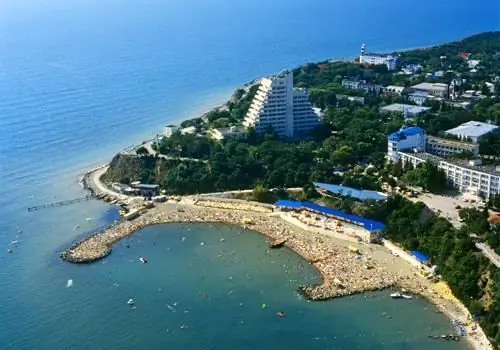- Author Harold Hamphrey [email protected].
- Public 2023-12-17 10:06.
- Last modified 2025-01-24 11:10.
One of the largest cities in southern Russia is Krasnodar. The administrative, historical, cultural center of the Kuban has been dynamically developing in recent years, being rebuilt and improved. The streets and squares of Krasnodar are diverse.

Historical buildings and modern skyscrapers are combined here, modern architectural structures are being built on squares that appeared many centuries ago. It only decorates the city and makes it unique.
Red Street
The central street of the city stretched for five kilometers. It is from here that all tourist trails of Krasnodar begin. Here is the largest concentration of interesting objects, attractions, entertainment. On weekends and holidays, part of the street is blocked for road transport and turns into a pedestrian zone. Then concert venues begin to work here, street musicians play, dancers perform. It is Red Street and the adjoiningTheater Square in Krasnodar is the busiest place in the city.

Red Street was named long before the revolutionary events. This only says that the townspeople have always considered her beautiful and were proud of her. The main sights of Krasnodar are located along it. Here and administrative city and regional institutions, and cultural facilities such as the Central Concert Hall, the library. Pushkin, Art Museum. Kovalenko, musical theater, squares and shopping centers, monuments and sculptural compositions. On its way, Krasnaya Street crosses the main square of Krasnodar, Teatralnaya.
Theatre Square
This famous place in the city got its current name thanks to the Gorky Drama Theater built here. Its former name was "October Revolution Square". The contour of the square is created by such objects as the City Hospital (Ekaterinodar Fortress), the Drama Theatre, the City Hall, the “building with a clock”. In the old days, the townspeople made an appointment not at the October Revolution Square (the name never caught on), but at the mayor's office or under the clock.
A monument to the Kuban Cossacks is a memorable place in Krasnodar Square. Destroyed during the years of Soviet power, it was restored in 1999 at the initiative of local residents.

The main decoration of the square is a planar fountain installed here in 2011. The largest in the south of the country and the most unusual in design, it attracts the attention of citizens and tourists. 350 jets rise tothe height of a nine-story building, creating unusual configurations in its movement. This water dance is accompanied by classical music and illuminated by different lights at night.
Teatralnaya Square in Krasnodar is the venue for all city holidays, exhibitions and fairs. The Victory Parade and big New Year celebrations take place here.
Pushkin Square
Red Street on its way crosses another well-known square in the city. You can start your acquaintance with Krasnodar from it, as this is the first attraction from the beginning of the street. This is a new area, recently appeared as a result of landscaping work. Previously, there was a pedestrian street lined with stalls and stalls.
Today young people enjoy spending time here. Concerts, festivals, specialized fairs are arranged for them. During the holidays, a temporary stage is installed on the square.
The contour of the square is created by such significant objects as the largest Pushkin library on the regional scale, the oldest museum, the Cossack Philharmonic Choir, the cozy Catherine Square with a monument to the Empress.
Monument to Alexander Pushkin
In the center of Pushkin Square in Krasnodar, a monument to the great poet rises. It was installed in 2009, on the occasion of the 200th anniversary of the birth of Alexander Sergeevich.

Thanks to this event, the square acquired its present appearance, flowers and trees were planted, and places for recreation were equipped. The author of the monument is the sculptor V. A. Zhdanov, the architect was V. I. Karpychev.






